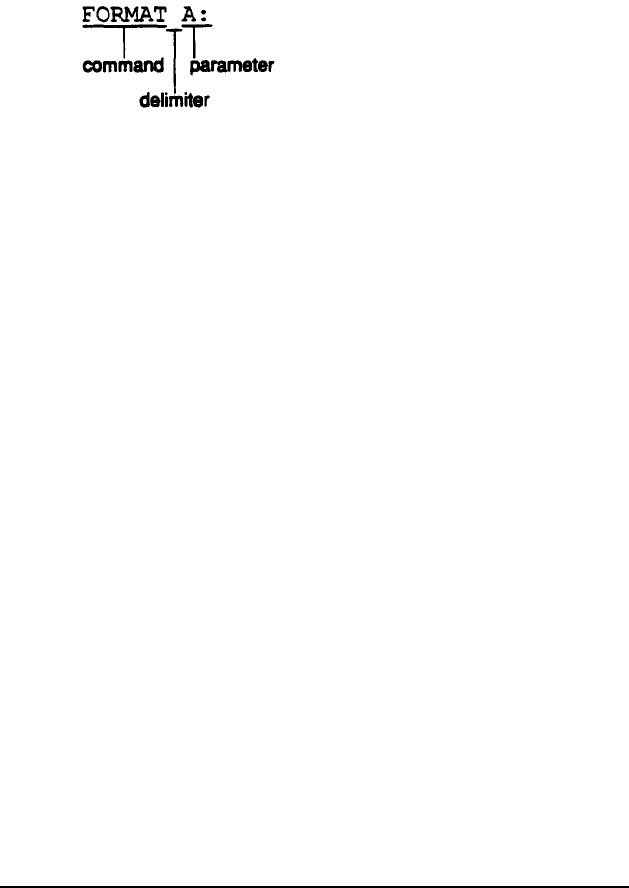
The MS-DOS command format consists of the command name,
parameters, and delimiters. The command name tells MS-DOS
the task you want the computer to perform. Parameters specify
details such as what data you want co process and where to
locate or store a file. Delimiters are characters such as spaces or
commas that separate command names and parameters.
For example, the command to format a diskette in drive A is:
FORMAT is the command name to execute the file
FORMAT.COM. The A: is a parameter that tells the
command what to format-in this case, the diskette in drive A.
The apace between FORMAT and A: is the delimiter that lets
MS-DOS distinguish the command name (FORMAT) from the
parameter (A:).
Some commands also have optional switches you can use. A
switch is a type of parameter that alters the effects of a
command. For example, suppose you want to make a copy of a
single-sided diskette. To do this, you need to add a switch to
the DISKCOPY command like this:
DISKCOPY A: B:/1
Without the / 1 switch, DISKCOPY would expect the diskette to
be double-sided. Switches are preceded by a forward slash ( /).
See your MS-DOS Reference Manual for a more detailed
explanation of the command format. Also see your MS-DOS
manual for command descriptions that tell you which
parameters and delimiters are required for each command and
which optional parameters and switches you can use.
Using
MS-DOS
With Your Computer
3-7


















